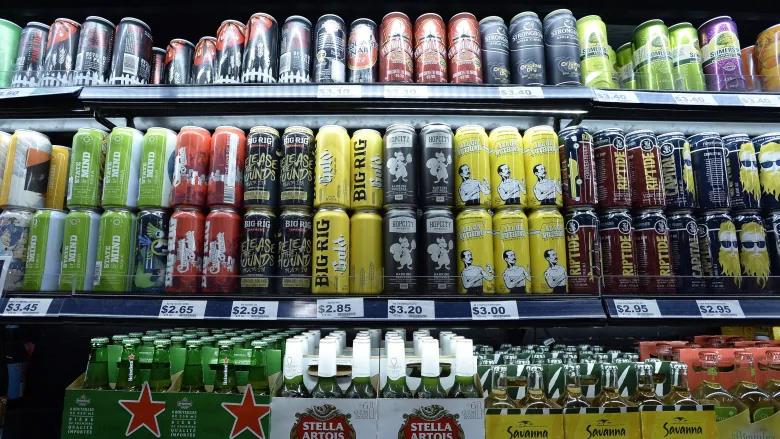Anyone walking through the beer aisles of their local liquor shop will be familiar with the scene: rows and rows of local craft beer, swathed in distinctive and often colourful logos and art — all in tall, 473ml (or 16oz.) cans.
The tall can — also known as the tallboy, king can or pounder — was started sold them in the 1950s.
But it’s become an increasingly popular size for craft beer, a category that has mostly eschewed the smaller 355ml cans and glass bottles in recent years.
According to beer brewers, the tall can’s popularity is more than just the appeal of having more to drink per can.
The cost of a tall can versus a short can is “negligible,” at least in terms of the additional aluminum required to produce it.
The real reasons are more about marketing, brand awareness and craft beer trends that go back at least a decade. Tall cans help distinguish craft product: brewer
The four-pack for tall cans has become a craft beer standard, because of long-held expectations on how much packs of beer costs.
It also helps distinguish it from non-craft brands that sell smaller cans in higher volume.
“There’s something, for better or worse, quite exclusive about a four-pack. It’s like if you see a four pack of tall cans, you know that that’s a craft beer. If you see a box of 12 short cans, your brain is telling you: ‘That’s a budget beer. That’s got to be cheaper, surely.’ ”
Tall cans make up 80 percent of craft beer sales in Ontario, short cans, meanwhile, only make about five per cent of craft beer sales.
Tall cans are also popular among many non-craft beer brands, accounting for 60 percent of sales in that category.
Having a larger can means more real estate to cover with distinctive art and logos that make an instant impression and tell customers exactly what they’re getting.
The tall cans, which sell very well in convenience stores also allow people to have just one beer and feel satisfied.
Many factors went into the decision, includes the fact that aluminum cans mean lighter transport costs versus glass bottles and broken bottles are potentially more dangerous than a crushed can.
Going with tall cans also helped to make a major statement about their brand.
“We always wanted to be able to provide our customers with an absolute world class beer at a very reasonable and fair price, and to present it in the ultimate blue collar, simple container, which is a pounder.”
From tall to small
While the tall-can approach has helped craft beer grow in popularity, it might have distanced it from the classic beer consumer: someone looking for a large box of small cans that are easy to drink — responsibly — in multiples.
Some craft brewery began to release their beer in short, 355ml cans in an effort to reach those customers.
Post time: Sep-28-2022







